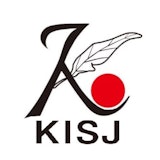[English/Japanese]
Happy New Year to you all! I hope to see you again this year.
In Japan, the new year begins on January 1st. What do you do at the beginning of a new year in your country? This time, I would like to introduce the Japanese New Year.
1 Nengajo(New Year's card)
A letter sent between January 1 and January 7 to wish someone a happy new year is called a nengajo. Recently, many people have been using social networking services instead of letters. Also, New Year's greeting cards cannot be sent to family members or relatives who have passed away in the previous year. Please be careful with this.
2 Hatsuhinode(First sunrise)
The sunrise on the first day of the year is called the "first sunrise" and is considered to be a very good omen. Did you see it?
3 Hatsumode(First visit to a shrine)
A New Year's visit to a shrine to pray for the safety of the year is called "Hatsumode". At Hatsumode, people draw omikuji fortunes to tell their fortune for the year and buy good luck charms.
4 Otoshidama(New Year's gift)
Onyedama is money that children can receive on New Year's Day. It is a fun event for children.
5 Osechi cuisine
Osechi-ryori is a New Year's feast. Each of these treats has its own meaning. For example, prawns have a meaning of "long life" because of their bent waist. Also, yellow food is believed to bring good luck with money. This is eaten from January 1st to the 3rd, which also means that you don't have to do any housework for the three days of the New Year.
6 Hstuyume(First dream)
What kind of dream did you have at the beginning of the year? In Japan, it is said to be good luck to dream of "Mt.
May this year be a wonderful one for all of you!
Happy New Year! We look forward to working with you again this year.
The new year begins on January 1 for Japan. What do you do at the start of a new year in your country? This time, I would like to introduce the New Year of Japan.
1 New Year's card
Letters sent between January 1 and January 7 to convey New Year's wishes are called "Nengajo". Recently, more and more people are doing it on SNS instead of letters. In addition, New Year's cards cannot be sent to people who have lost their family or relatives in the previous year. Please be careful.
2 First sunrise
The sun that rises on January 1 is called the "first sunrise." This first sunrise is considered very auspicious. Have you seen it?
3 First visit
Visiting a shrine to pray for the safety of the year on New Year's Day is called "first visit". At the first visit, you draw fortunes to predict the fortune of the year and buy amulets.
4 New Year's Ball
New Year's money is money that children can receive on New Year's Day. It can be said that it is a fun event for children.
5 Osechi cuisine
Osechi ryori is a feast eaten on New Year's Day. Each of these treats has its own meaning. For example, shrimp have a bent waist, which means "you can live a long life". In addition, yellow food is said to increase fortune. This is something to eat from January 1 to 3, and there is also the point that you do not have to do housework for three days on New Year's Day.
6 First dream
What dreams did you have at the beginning of the year? In Japan, dreaming of "Mt. Fuji", "Falcon" and "Eggplant" is considered auspicious.
May this be a wonderful year for all of you!
Show original text

![[Image1][English/Japanese]Happy New Year to you all! I hope to see you again this year.In Japan, the new yea](https://img-cooljapan.imgix.net/member_posts/image/1a4369bb7fa8837519c5fc324e1c16ab5a899b15.jpg?w=330&h=330&fit=min&auto=format&q=70)
![[Image2][English/Japanese]Happy New Year to you all! I hope to see you again this year.In Japan, the new yea](https://img-cooljapan.imgix.net/member_posts/image/f272851a283ffaaf018a28c5c4dd128793f9e426.jpg?w=330&h=330&fit=min&auto=format&q=70)
![[Image3][English/Japanese]Happy New Year to you all! I hope to see you again this year.In Japan, the new yea](/img/dot.gif)

